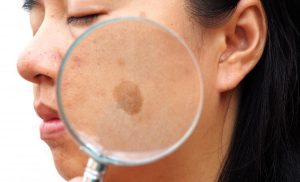Seborrheic Keratosis
What is seborrheic keratosis?
A seborrheic keratosis is a common benign skin growth, similar to a mole. Most people will have at least one in their lifetime. They tend to appear in mid-adulthood and their frequency increases with age. They are harmless .
Skin growths like seborrheic keratoses are sometimes also called epidermal tumours. That doesn’t mean they’re cancer, though. Technically, moles and warts are also epidermal tumours. It just means they are clusters of extra cells on the epiderma, which is the outer layer of the skin.
What does seborrheic keratosis look like?
Seborrheic keratosis are roundish or oval-shaped patches on the skin with a “stuck on” appearance. They are sometimes described as waxy or scaly. Generally are raised above the skin and even when they are flat you can feel them with your finger. Keratosis are usually brown, but can also be black or tan, and less often, pink, yellow or white.
Keratosis are characterised by keratin on the surface — the same fibrous protein that fingernails, hooves, and horns are made of. This causes the textural details that often distinguish the growths. Sometimes it looks like small bubbles or cysts within the growth. Sometimes it looks scabby or wart-like.
Who gets them?
Anyone can get one, but most commonly:
- People who are 50 and older. They usually begin to appear in middle age, and rarely in younger people. About 30% of people have at least one by the age of 40, and about 75% by the age of 70.
- People with a family history of it. About half of all cases of multiple seborrheic keratoses occur in families, suggesting that the tendency to develop many of them may be inherited.
- Lighter-skinned people. Classic seborrheic keratosis as described here appears less frequently in darker-skinned people. However, a variant of seborrheic keratosis called dermatosis papulosa nigra is very common in darker-skinned people, including those of African, Asian and Hispanic descent.
How will they be removed?
Here at Persona we have options for removing your seborrheic keratosis:
- Cryotherapy. Your healthcare provider will numb the skin and then use liquid nitrogen to freeze the growth. This will cause it to fall off within a few days or weeks. Cryotherapy is a common choice when the diagnosis is clear and there is no need to preserve a sample of the growth for biopsy. One possible side effect is that the skin where the growth was will lose some of its pigment and look lighter.
- Electrodessication/Curettage. Your healthcare provider will numb the skin and then use a targeted electro-current to burn the seborrheic keratosis. They use a surgical instrument called a curette to scrape away the remains of the growth. Electrodessication and curettage are also sometimes used individually. The risk of scarring is generally low with both methods, but there is some wound care involved afterward.
- Shave Excision. This is the preferred method when your healthcare provider wants to preserve a sample of the growth to analyse in the lab. After numbing the skin, your healthcare provider will carefully shave off the growth and smooth the skin underneath with a surgical curette. Then they’ll send the shaved growth to the lab for analysis.
- Laser Therapy. Lasers offer an alternative to surgery by burning the growth, sterilising the wound and sealing the tissue all at once. Laser therapy is quick, but the wound will be sore for a while afterward. Lasers are associated with good cosmetic results.
What can I expect if I’ve had my seborrheic keratosis removed?
A seborrheic keratosis that has been removed will not return. But you might grow a new one somewhere else.

